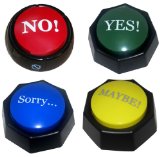
Join 100, 000+ subscribers to get our free newsletter packed with tips and advice.
Privacy promise: We will never share your data or spam you.
Before you sign up for a credit card, bank loan or store card, or add to an existing card or loan it makes sense to think about whether you really need to borrow money. At times like this – with economic uncertainty and rising bills – many people are now choosing to pay back money they’ve already borrowed rather than borrow more.
Deciding whether you should be borrowing money
There are some very important questions you need to answer before you borrow money. You should ask yourself if you need to spend the money, if you have other ways of financing the purchase and if you can afford to pay back the money you’re planning to borrow.
Do you really need to spend the money at all?
Top tip
If you have a tendency to buy things on impulse, try giving yourself a cooling off period of at least two days. You may find you’re not so keen to buy it.
Some people who borrow money do so either without thinking if they can really afford it, because credit is offered at the point of purchase (for example store cards); or because they feel they have no other option, but that often isn’t the case. It may be that you could put off making the purchase or not make it at all. Try asking yourself:
- Could I wait until I can afford to buy the item without borrowing?
- If there’s something I need, is there another way of getting it (for example, swapping it for something else, buying it second-hand or getting it for free from a free recycling website)?
Can you save up or use some savings instead of borrowing money?
If you really don’t need to spend the money today, then you should seriously consider saving some money each month rather than getting into debt.
If you can wait and save up for a purchase, instead of using credit, it will cost you far less (unless you qualify for a 0% credit card deal), as you won’t have to pay any interest. It might also have been reduced in a sale or if it’s technology, upgraded to a better model.
For example, if you wanted to buy something that cost £600:
Saving before you spend
If you don’t have any savings, but can save, for example, £50 a month, it would take you a year to save the £600 and you would have earned £6 in interest (assuming you’re a basic rate taxpayer - which means 20% tax comes off the interest you earn - and that you put the money into an account paying 3% in interest).
Cashing in savings
If you used the money from your savings account; assuming your savings earned 3% a year and that you paid tax at the basic rate (of 20%), you would lose a maximum of £14.40 in interest if it took you a year to save the £600 again.
That means spending £600 from your savings would ‘cost’ you a maximum of £614.40 by the time you’ve added in the lost interest.
Using a credit card
If you paid the £600 by credit card, charging an average interest rate of 17%, and if you paid the debt back at a rate of £50 a month, it would take you 14 months to repay the debt and would cost you £58 in interest.
That means you’d be £43.90 (£58-£14.10) worse off by paying on your credit card, rather than cashing in your savings.
Good money borrowing versus bad money borrowing
Example 1 – Sarah is a teacher who travels to work by bus each day. She gets a better job at a new school paying a higher salary, but she can’t travel there on public transport. She wants to buy a car but doesn’t have enough savings to cover the cost so she needs to borrow some money.
This is good borrowing as Sarah’s job is paying her more money. She will recoup more than the cost of the car, including the money she borrowed. Of course, it depends on the kind of loan she gets and how much it costs relative to her increased pay.
Interesting facts
Additional information




|
WORX Aerocart Multifunction Wheelbarrow, Dolly and Cart Lawn & Patio (Positec/Worx - Lawn & Garden)
|

|
4 Total Buttons! The NO, YES, SORRY and MAYBE Buttons - SIMPLIFY YOUR LIFE WITH A BUTTON - Single Detail Page Misc (ZANY TOYS LLC)
|











